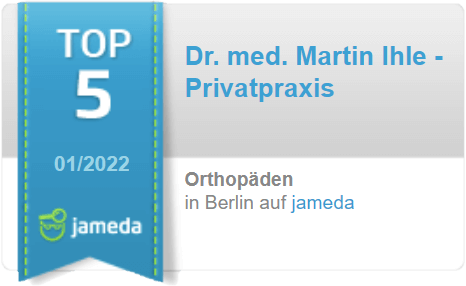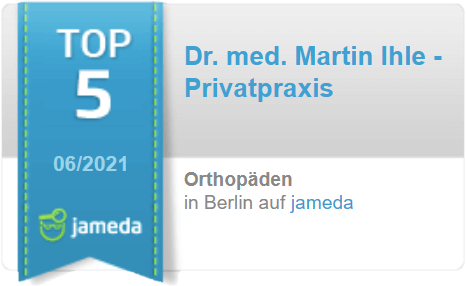Shoulder pain

✔ Comprehensive and holistic diagnosis
✔ Orthodox medicine and alternative therapies
✔ Individual therapy program
«I would be happy to present my diagnostic and therapeutic concepts to you in order to relieve your shoulder pain and to help you regain a better quality of life.» – Specialist Dr. med. Martin Ihle
Shoulder pains can affect any meeting
The symptoms of the shoulder joint are just as complex as its structure. Younger and older people can be equally affected. The pain can be acute or chronic. More frequent than acute injuries of bones, muscles and joint parts are complaints resulting from permanent overloading or incorrect loading of the shoulder joint.
The high susceptibility of the shoulder joint to chronic overload complaints is due to its special anatomical structure. Although this results in a high range of motion, it also leads to an increased susceptibility of the joint to functional complaints, since damage to the surrounding muscle cuff or the stabilizing ligament structures can quickly lead to incorrect loading in the joint.
Painful movement restrictions
The resulting complaints manifest themselves in a painful restriction of shoulder mobility. This can occur both under stress and at
In the foreground of chronic shoulder complaints are generally a muscular imbalance and
Diagnosis and therapy of shoulder pain
In the context of a holistic and integrative diagnosis of shoulder problems, it is important to also consider the cervical spine, because there is an interaction here: The nerves supply the shoulder and the entire arm via the spinal cord. Influences from the vertebral segment can provoke these nerves to a pain reaction. At the same time, the cervical spine offers a good approach
Sometimes the mere treatment of the trigger points is enough to quickly relieve the shoulder pain. Inflammatory changes of
Natural treatment of shoulder pain
Non-surgical therapy is particularly suitable for chronic pain in the shoulder area, whether through the treatment of the disturbed structures or the superior segments.
In principle, a subtle manual diagnosis is always the first step in determining the individual symptoms. The particular strength of the manual medical examination lies in the fact that in the case of functional syndromes a therapy can be started without transition.
The diagnosis of the shoulder always includes an inventory of the cervical spine with the upper cervical joints, the temporomandibular joints
Ultrasound, X-rays and MRT as a supplement to manual diagnostics
In the next step, ultrasound diagnostics provide valuable information on calcium deposits or structural damage to muscles and tendons. The results are incorporated into further therapy and treatment approaches. Under certain circumstances, an X-ray examination, computer tomography (CT) or magnetic resonance imaging (MRI) can also be performed. If the symptoms are appropriate, a neurological finding with measurement of the nerve conduction velocity and muscle activity may also be necessary.
If the symptoms are functional, the strength of manual medicine can be seen here. It leads seamlessly into the therapy. Already during the examination manual intervention can contribute to the mobilization of the joint, to the stretching of the musculature, to the treatment of the social trigger points and to the release of blockades of joint structures.
Combination of chiropractic and myofascial stretching techniques
In the treatment of my patients, the application of myofascial stretching techniques with chiropractic techniques has proven to be particularly effective. For joint
In addition to manual techniques, dry needling and infiltration techniques are suitable for the treatment of trigger points. In addition, the application of physical methods such as shock wave therapy is possible. This method is particularly suitable in cases of irritation caused by calcium deposits in the connective tissue. Subsequently, a
Long-term exercise programme for lasting treatment success
After all therapy procedures, I recommend that you learn certain stretching and mobilization techniques, which you should perform
In the case of receding complaints, an exercise program should always follow in which stretching, strengthening
Book your appointment now!
Private orthopaedic practice
Dr. med. Martin Ihle
Jägerstr. 70
10117 Berlin
3. OG - Elevator in the yard
Visit by appointment
Experiences of our patients
Source: Google
Private practice for orthopedics
Dr. med. Martin Ihle
Jägerstr. 70,
10117 Berlin



